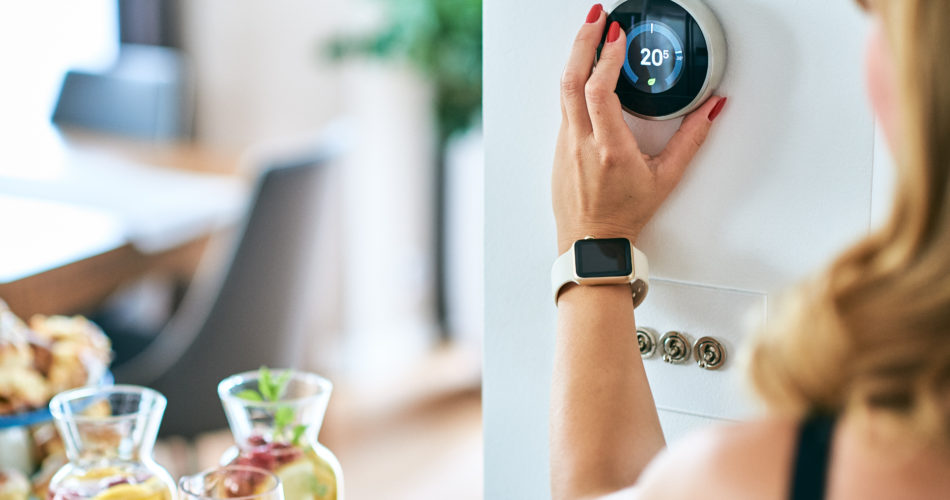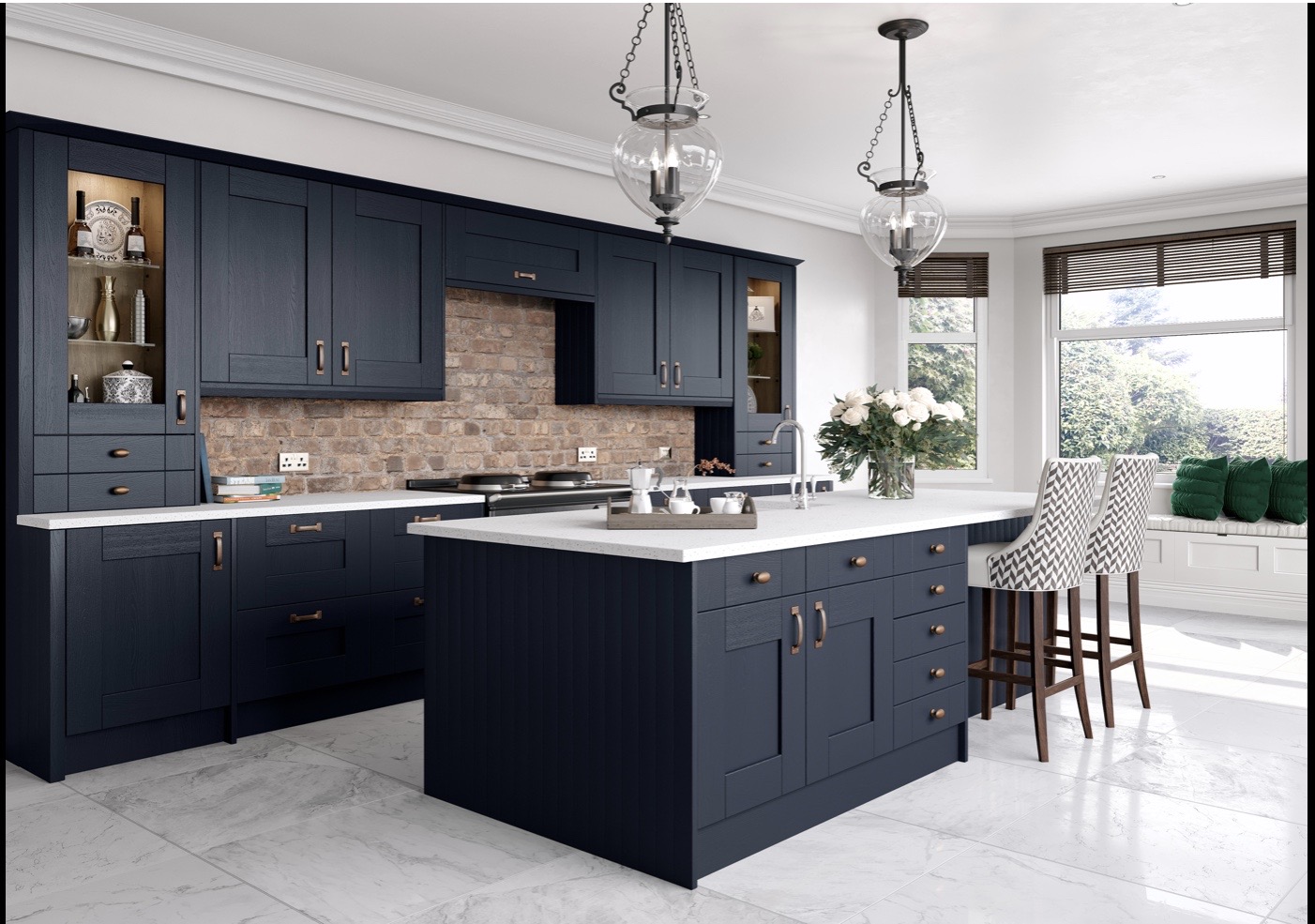With increasing energy prices across the UK, it’s never been a better time to consider how you can make your kitchen energy efficient.
Electricity and gas bills for a typical household will go up by £693 a year in April, representing a 54% annual increase. Bills are going up because the energy price cap – the maximum price suppliers in England, Wales, and Scotland can charge households – is being raised.
While there is some forthcoming support coming from the government, ensuring that you are not wasting gas, electricity or water within your kitchen can help you to mitigate a little against the increased costs.
With this in mind, we share our top tips for making your kitchen as energy-efficient as possible.
Choosing cooking methods carefully
When it comes to cooking, we all have our favourite methods. But are the ones you are choosing the most energy saving.
Unsurprisingly, microwaving food is the most energy-efficient way to cook, followed by slow cookers, hobs and with ovens at the bottom of the list.
In fact, cooking food in a microwave for 10 minutes a day will cost around £3 per year, a slow cooker for 8 hours, around £14 per year. While cooking on an electric hob for 30 minutes a day will cost about £90 per year.
It’s also worth a mention that covering pots and pans while using the hob helps to trap heat, so you can cook things faster. Using lids on pans when cooking can save energy costs of around 3% per pan – worth bearing in mind when cooking a lot of veg for that Sunday roast!
Of course, while you may still have your preferred ways of preparing certain foods, it’s worth trying out new ways to cook your favourite dishes. You never know, you might find you prefer your new method.
Energy efficient kitchen lighting
There are plenty of ways to reduce costs when it comes to lighting your kitchen, and what’s more, many of them also help to make the aesthetic of your kitchen better.
On a very simple level, switching your kitchen lamps over to energy saving LED lights will conserve energy. On the whole kitchen lights are left on more than any other light in the home, so making a simple switch will help you to save on cost. Energy efficient bulbs such as CFL’s or LED’s also emit less heat, making them the idea choice if you are looking to put spotlights under kitchen cabinets.
But it’s also wise to mindful of the types of lighting you have in your kitchen. We’ve talked before about how lighting can affect your kitchen design and the truth is that if you create a good mixture of task, accent and ambient lighting, you can ensure that you use the lowest amount of energy, by keeping the less bright lighting to a minimum, using it only when needed.
Be mindful of the dishwasher
Most modern dishwashers will offer an economy or eco programme, so it’s worth using this for day to day washing up. These programmes can save up to 20% of energy by using less power to heat the water.
Be sure to only run your dishwasher when it’s full, and don’t worry about using things such as pre-wash settings, simply scrape your leftovers into your food bin.
If you’ve got a very old dishwasher it may be time to consider an update. Modern dishwashers, like modern washing machines, are cold-fill only, which makes them far more energy-efficient than older models. If you have an older model, while it may cost in upfront investment to buy new, over the long run, the cost of running it will be cheaper as you will avoid the heating costs.
Washing up by hand
Of course, not every household has a dishwasher, but there are still things you can do to save energy if you wash by hand. Firstly, don’t just run the tap when washing up. Its better to fill the bowl and rinse all at once in a second bowl.
When you have pots or pans that are heavily stained, give them a pre-soak rather than just rinsing them under the tap while you are washing.
Save energy when washing clothes
A washing machine is one of the most often used appliances in any household. A 7kg washing machine used 220 times a year will typically currently cost around £25 – £30 each year to run. However with increased costs this could double.
There are ways to keep your washing habits energy efficient though.
Firstly, choose lower temperature washes when your clothes are relatively unsoiled. Newer washing machines will often even have a 20 degree option which can be perfect if you are simply refreshing worn clothing.
Additionally, try to avoid doing half loads wherever possible as this wastes energy. If it’s unavoidable, many washing machines come with a “half load” option which uses less water and therefore will not use so much energy heating the water (and for those on a water meter, saves costs there too).
Oven tips
As mentioned above, your oven is one of the biggest energy users when cooking. But we don’t suggest you give up that roast dinner just yet!
Generally speaking the longer your oven is on, and the higher the temperature, the more energy it will use. Ovens account for about 8.3% of the electricity consumed by electrical appliances in the home.
In terms of time, don’t pre-heat your oven for too long. It can be easy to stick the oven on, walk away and forget about it. But by putting your food in the moment it reaches your needed temperature you can help to save energy.
Fan assisted ovens mean that you can cook at a lower temperature as they distribute heat evenly around the oven. In many cases, you can choose to turn the oven off just a little while before the end time as the oven will retain the heat. A good oven will retain the required temperature for around ten minutes after you switch it off.
Don’t open the oven door while cooking, this means that the oven loses heat and has to compensate to get the temperature back up.
Don’t forget that a clean oven is more energy efficient, as it reaches the required temperature more quickly, and distribute heat better.
Energy Efficient hobs
While many cooks swear by gas, the most energy efficient hob is an induction hob. When it comes to energy use, research indicates that induction jobs are cheaper to run, being around 74% efficient in converting energy to heat while using 57% less energy than gas hobs.
However, whatever type of hob you have there are some things that you can do to reduce how much energy you are using.
Using the right sized pan for both the amount of food you are cooking and the hob size makes a difference. If you’re using a pan that’s too large for your needs, you take longer to get to the right temperature, while using a hob burner that’s too large for your pan simply wastes unneeded energy.
Certain types of pans conduct and retain heat better than others – though make sure you choose one that works well with your type of job. Copper bottom pans for example heat up more quickly than stainless steel, while cast iron pans retain heat efficiently.
Heating your kitchen
Make sure that you heat your kitchen effectively. As the heart of the home, we often make a lot of use of our kitchens, but that doesn’t mean that we always need the radiator blasting. Often when cooking the oven will keep the space warm, so don’t forget to dial down the radiators.
Equally when planning out your kitchen design, consider where heat may be lost and insulate accordingly.
The fridge
Home refrigerators top the list of appliances that use the most energy in our homes. It’s not surprising given that they are constantly on and running to keep our food cold.
One thing to bear in mind is that the better stocked your fridge, the less energy it takes to keep the items within cold. Heat is always trying to flow from a hot region to a cold region (known as heat transfer).
What this means is that, every time you open the door to your fridge, hot air will enter and displace the cool air. The more items you have within the fridge, the less open air space there is for the hot air to flow to. This means that it will take less time (and therefore energy) for your fridge to cool back down once the door is closed again.
Switch kitchen accessories off
In the modern kitchen many of us will have a raft of appliances on at any given time. The microwave with it’s clock that hasn’t been reset since 2007. The coffee machine quietly plugged in in the corner. The smoothie maker that makes a special appearance every know and then.
By making sure you switch off gadgets when not in use, you can help to save energy.









